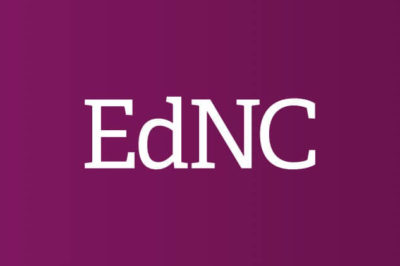

In Johnston County, a suburban district east of the rapidly growing Triangle, it’s a very different story. Local school officials report growth of about 600 new students every year in Johnston County Schools. More than half of their elementary and middle schools are already at capacity, and some of the school’s older facilities are experiencing rapid deterioration.
There’s very little similar about these two districts, but, this week, administrators in both school systems agreed on one thing before a special commission of legislators charged with studying the state’s infrastructure: facility and maintenance needs for K-12 schools are reaching a flashpoint in North Carolina.
And without major changes in how the state and federal government fund these needs, public schools in the state and nationwide are likely to become increasingly more stratified, with older, failing facilities chockablock in low-income and fast-growing school districts.
“Some sort of action is needed. Because some counties just do not have the financial strength to provide the facilities that they need,” says Ken Phelps, an architect and lead school planning consultant for the N.C. Department of Public Instruction.
This week, Phelps told members of the state’s Blue Ribbon Study Commission that, over the next five years, K-12 school districts in North Carolina need more than $8 billion in new school facilities, maintenance and renovations.
Over the next decade, that number—which does not include daily operational costs such as school staffing and books—swells to about $13.4 billion in capital needs.
State leaders, Phelps says, must reassess a system that allows North Carolina, like many states in the U.S., to rely almost entirely on local school districts to fund facility costs, despite local districts widely varying assets.
Coincidentally, the commission’s meeting came just days after the release of a national, K-12 report that documented, in painstaking detail, the failing infrastructure of American schools.
From 1994 through 2013, the report—which was co-authored by national education leaders at the 21stCentury School Fund, the National Council on School Facilities and The Center for Green Schools—found that the nation underinvests about $46 billion each year in its school infrastructure.
That $46 billion is about the amount needed to bring the nation’s schools up to modern construction standards, they say.
It’s a massive cost that most experts agree cannot be borne solely by local school districts. Yet during that time period in North Carolina, the report found local school districts paid the vast majority, about 92 percent, of their capital costs. As a result, districts’ long-term debt in North Carolina totaled $8.2 billion, or about $5,600 per student.
It’s an unsustainable pattern, say school advocates like Mary Filardo, executive director of the D.C.-based 21st Century School Fund and a co-author of the national infrastructure report.
“The states, really, have to step up,” she says.
***
Ask anyone about the most important facets of a thriving public school in 2016, says Phelps, and that list will likely be topped by good teachers and strong parental involvement. But there’s one lynchpin everyone is forgetting, he says.
“Somewhere in that hierarchy of important factors is school facilities,” says Phelps.
Academic research, while somewhat limited, points to higher student achievement, higher teacher retention rates and lower truancy and suspension rates in high-quality facilities, experts say, while also providing clear health benefits for students and school staff.
In addition to plunging attendance rates, studies have found that the recirculated air and poor ventilation often found in aging school facilities is linked to slower speed in completing tasks, the national report says.
Yet, despite its importance, experts say, infrastructure is a relatively overlooked facet of the nation’s K-12 education system.
“Education infrastructure on the K-12 side tends to be in this sort of no-man’s land,” says Filardo, who points out that many education advocates tend to focus on school personnel and in-school interventions but not the school itself.
Likewise, in North Carolina, a great deal of attention has focused on teacher pay and per-pupil spending, but neglects the declining state of many school facilities.
Indeed, North Carolina has not voted on any statewide bonds for K-12 school infrastructure in 20 years, state staff told lawmakers this week. During that time, federal and state portions of North Carolina’s capital expenditures have been on the decline, jettisoning the burden on stressed local governments.
It’s a trend that Filardo’s report called “inherently and persistently inequitable” in the nation’s schools because it places low-income districts with smaller tax bases at a clear disadvantage.
In such cases, as in Nash-Rocky Mount Public Schools, the results are telling. Families leave the district, and revenues go with them.
Shelton Jefferies, the school system’s superintendent, says his district has lost more than 1,400 students since 2011, leading to a net loss of about $13 million in federal, state and local funding, even though fixed costs for maintenance and renovation continue to climb. The system also lost more than 350 positions during that time.
Closing schools and consolidating student populations has become a “standard consideration,” Jefferies said. “It’s a significant leadership challenge,” he added.
Fittingly, Phelps points out the state’s most badly needed facility upgrades can be found in North Carolina’s poorest counties.
Meanwhile, of the capital needs reported to the state over the next decade, Phelps says more than 60 percent are required to fix long-deferred maintenance or to resolve essential building code or life safety issues. Another 10 percent are needed to replace “obsolete facilities,” he said.
“These are school buildings that have grown so old it would not make sense to make modifications to the buildings,” said Phelps. “These buildings need to be totally replaced.”
Keith Poston, president of the Raleigh-based research and policy group, the Public School Forum of N.C., says the state’s system of sharing operational costs with local districts has helped to partly blunt inequities in school academics. But its approach to capital funding is a clear detriment to poor districts.
“This is one of the areas we’re going to have to explore,” says Poston. “What are some other funding alternatives that direct resources better, where it’s needed the most, to low-wealth counties? Not only are they at a disadvantage in terms of being able to offer supplemental pay (to attract teachers), they’re also at a disadvantage in terms of the types of facilities they’re able to afford.”
Lawmakers offered few clear ideas during this week’s commission meeting, although the panel’s co-chair, Sen. Chad Barefoot, a Wake County Republican, suggested the state needs to find a way to determine which districts are spending their capital funds poorly first.
Nevertheless, most experts say the problem will require changes in state and federal funding allocations. According to Filardo’s report, North Carolina is one of 33 states in the U.S. providing at least some small share of capital funds for districts, although the amount varies wildly by state. Five states pay all of their districts’ capital needs, while 12 provide no support whatsoever.
In North Carolina, Filardo suggested a policy wherein state officials step in to offer capital assistance if a district spends more than a certain percentage of its infrastructure dollars on short-term maintenance, rather than speeding long-term, fiscally responsible investments.
She compared the dilemma to car-owners who fork over cash in smaller, piecemeal repairs rather than saving money in the long run on a new vehicle.
“You’re really throwing good money after bad, but you don’t have a choice,” she says. “They can’t afford a new car. It’s the same thing” in school infrastructure.
She also suggested that federal officials should be diverting more funds to K-12 schools’ capital needs, as they already do for operational expenditures.
“But I don’t feel like anyone should be clamoring for a federal piece until the states do their fair share,” Filardo added. “And they’re not.”
The legislature’s infrastructure commission is scheduled to prepare a final report with its recommendations to the N.C. General Assembly in December.
In the meantime, advocates say, the problem requires a greater amount of public attention.
“I understand, it’s not that simple,” says Filardo. “It’s not easy to understand. But it’s really important and it has an enormous impact on the viability of a community.”
Editor’s Note: This article was published by NC Policy Watch on April 20, 2016.


